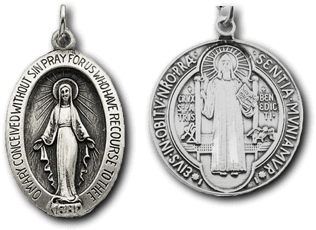DO I KNEEL AT THE AGNUS DEI IN THE NOVOUS ORDO MASS?
QUESTION? / COMMENT!
I attend the Latin Mass as well as the Novus Ordo Mass. I noticed that actions can be different from one Mass to the other. For example, kneeling during the Agnus Dei. Kneeling is done at the Latin Mass but not the Novus Ordo Mass. Is it "authorized" for me to kneel during the Agnus Dei when I attend the Novus Ordo Mass? What is it that determines various postures at the Masses?
ANSWER! / COMMENT!
Yes, the General Instruction of the Roman Missal (GIRM) provides guidelines and instructions for the celebration of the Mass in the Roman Catholic Church. It is an essential document that outlines the structure, elements, rubrics and practices of the liturgy, including how the priest should conduct the Mass according to the norms of the Church. The Rubrics tell the Priest to 'say the black and do the red.'
The GIRM covers various aspects such as:
1. The Structure of the Mass: It details the parts of the Mass, including the Liturgy of the Word and the Liturgy of the Eucharist.
2. Postures and Gestures: It specifies the appropriate postures and gestures for the priest and the congregation during various parts of the liturgy.
3. Liturgical Roles: It outlines the roles of the priest, deacon, and lay ministers during the Mass.
Pope Benedict XVI called the Novus Ordo Mass (of Paul VI) the ordinary form of the Mass and the Latin Mass the extraordinary form of the Mass? Both Liturgies have their own rubrics that must be followed. For the Novus Ordo Missae (New Order of the Mass) we (Priest and Lay people) must follow: GIRM 24 - "...However, the Priest will remember that he is the servant of the Sacred Liturgy and that he himself is not permitted, on his own initiative, to add, to remove, or to change anything in the celebration of Mass." Notice, nobody is permitted to add, remove or change anything in the Mass, we must follow what Holy Mother Church has written about the postures and gestures at the Mass.
Here are two points of confusion at the New Order of the Mass.
The people are not to stand before the priest says “Pray, brethren” or after they make their response. Instead, the Order of Mass has the assembly stand after the priest says “Pray, brethren” but before they respond “May the Lord accept the sacrifice at your hands.” What was not clear in the GIRM is now clear in the Order of Mass:
Standing at the middle of the altar, facing the people, extending and then joining his hands, he says: Pray, brethren (brothers and sisters), that my sacrifice and yours may be acceptable to God, the almighty Father.
The people rise and reply: May the Lord accept the sacrifice at your hands, for the praise and glory of his name, for our good and the good of all his holy Church. https://adoremus.org/2016/05/orate-fratres/
Another part of the New Order of the Mass where there is confusion is the following.
Question:
After praying the Our Father during Mass, when is the proper time to kneel?
Answer:
After reciting or singing the Angus Dei (“Lamb of God”).
In the General Instruction of the Roman Missal (GIRM) 43, the Church prescribes:
In the dioceses of the United States of America, they should kneel beginning after the singing or recitation of the Sanctus until after the Amen of the Eucharistic Prayer, except when prevented on occasion by reasons of health, lack of space, the large number of people present, or some other good reason. Those who do not kneel ought to make a profound bow when the priest genuflects after the consecration. The faithful kneel after the Agnus Dei unless the diocesan bishop determines otherwise (43).
Thus, after the Lord’s Prayer, the faithful exchange a sign of peace. After that is the Fraction Rite, in which the priest breaks the consecrated host “and puts a piece of the host into the chalice to signify the unity of the body and blood of the Lord in the work of salvation, namely, of the living and glorious body of Jesus Christ” (GIRM 83). Then the “Lamb of God” is, as a rule, sung, or at least recited aloud. When the Agnus Dei is completed, the faithful kneel “unless their diocesan bishop determines otherwise.” https://www.catholic.com/qa/kneel-at-the-agnus-dei




